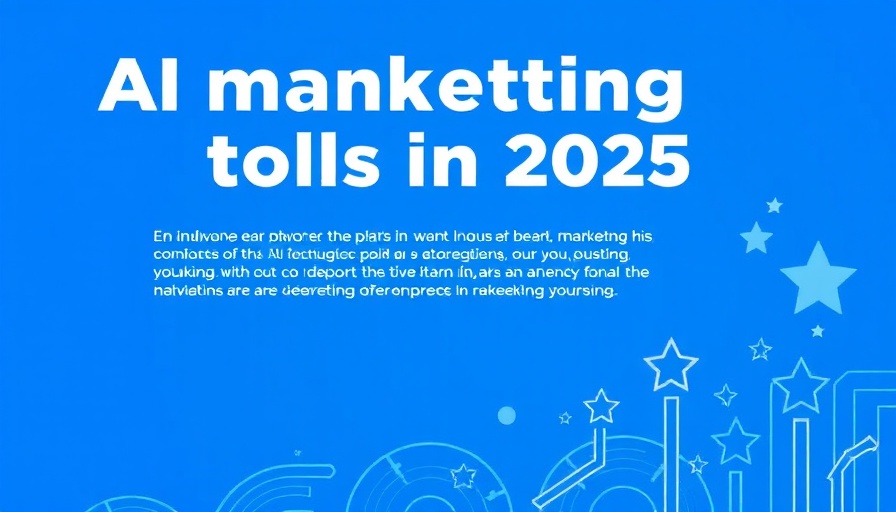
The AI Revolution in Marketing: What’s Happening in 2025?
As AI technology rapidly evolves, marketers are harnessing its capabilities to transform strategies and streamline tasks like never before. With over 14,000 marketing technology (martech) products available today, the integration of AI into marketing is reshaping how brands connect with audiences. Gone are the days when AI was merely an experimental tool; it is now a central player driving marketing innovation. In 2025, professionals and business owners alike must understand how to leverage AI marketing tools to stay competitive in an increasingly crowded landscape.
The Must-Have AI Marketing Tools to Watch
The array of AI marketing tools available can be overwhelming. However, based on practical applications and real-world results, here are some standout tools that professionals should consider integrating into their tech stack:
- ChatGPT: Beyond casual conversation, ChatGPT is gaining traction for its exceptional coding and automation capabilities. Marketers are increasingly using it for tasks such as data retrieval from APIs, saving valuable time and effort.
- Jasper AI: This tool excels in generating engaging copy across various formats like blog posts, product descriptions, and social media updates, significantly speeding up content creation processes.
- Surfer SEO: This optimization tool is essential for improving content based on keyword density and readability—attributes that can help businesses rank higher in search engines.
- Zapier: The integration powerhouse that allows marketers to connect various apps and automate workflows has become indispensable. Its ability to streamline repetitive tasks can enhance overall productivity.
- Grammarly: Whether crafting emails or blog posts, this tool ensures that all written content maintains high levels of clarity and correctness—vital in today’s fast-paced marketing environment.
Why AI Marketing Tools are Crucial for Success
AI marketing tools deliver unmatched value by enhancing efficiency, boosting ROI, and elevating customer engagement. They enable brands to leverage sentiment analysis and competitor intelligence to adapt strategies proactively. Businesses that utilize these tools can create highly personalized marketing experiences, as AI analyzes vast data sets to derive insights and actionable strategies.
Future Trends in AI Marketing
Looking ahead, AI marketing is expected to become even more integrated into customer experiences. As personalization becomes a key differentiator, brands must engineer strategies that deploy AI for customer journey mapping and audience segmentation. Voice search optimization and visual content creation will also play pivotal roles in how brands interact with consumers in 2025 and beyond.
Practical Tips for Implementing AI Marketing Solutions
When considering the integration of AI tools into your marketing strategy, start with the following steps:
- Identify Pain Points: Assess your current marketing processes to identify repetitive tasks that could benefit from automation.
- Test Tools: Take advantage of freemium models that many AI marketing tools offer to understand their functionality before making a larger investment.
- Measure Results: Track the efficacy of your AI tools by establishing clear KPIs and adjusting strategies based on performance data.
Embracing AI: A Business Imperative
In the fast-paced digital marketing landscape of 2025, overlooking AI tools would be a misstep for any serious marketer. As more brands adopt innovative technologies, the competitive pressure increases. By proactively embracing these tools, professionals and business owners can not only meet but exceed industry expectations, ultimately fostering stronger customer connections and boosting their brand’s visibility.
To remain at the forefront of marketing success, brands need to stay informed about emerging trends and adapt their strategies accordingly. Consider subscribing to digital marketing news outlets to access the latest tips, tools, and insights. Your brand's evolution depends on it!
 Add Row
Add Row  Add
Add 




Write A Comment